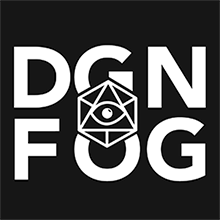Religion
Baldurians are permitted to worship whatever deities they wish, so long as they refrain from violent acts and practices that disrupt trade. While multiple temples rise within the city walls, hundreds of tiny shrines sit along the twisted streets of the Outer City.
In the city proper, worship centers around a handful of well-known and generally respectable deities. Most established temples, with clergy and daily rituals, are in the Upper City, which precludes commoners from worshiping after dark, when only residents are allowed to remain in the Upper City. Since most commoners work during the day, their faith usually becomes secondary in their lives. Ostentatious adherence to religious rituals is seen as a privilege of the wealthy. Some Baldurians even think outwardly displaying one’s faith is a sign of pretentiousness and insincerity.
Among the many deities worshiped in Baldur’s Gate, a handful hold particular prominence.
Dead Three
Bane (the Lord of Tyranny), Bhaal (the Lord of Murder), and Myrkul (the Lord of Bones) make up the Dead Three. While these deities have lost much of their power, their faiths still command respect and fear throughout Baldur’s Gate. While open worship of the Dead Three is frowned upon in Baldur’s Gate, their worship is not illegal — so long as worship remains within the laws. Every now and then, rumors surface that a powerful political figure is a Bhaalspawn (see "Bhaalspawn"). These claims almost always prove to be smear campaigns with no basis in truth — though, in some cases, such claims have actually raised a figure’s standing in the public eye. For more details on the Dead Three, see “Dangers in Baldur’s Gate”.Gond
The High House of Wonders, located in the Upper City, serves as the city’s temple of Gond, a god of innovation and invention. Within the walls of the temple, clergy members are permitted to brew experimental potions and elixirs, build and test mechanical constructs, and hire locals to participate in controlled experiments — all in the spirit of invention and innovation. High-ranking members of Gond’s clergy oversee a number of secret projects sponsored by wealthy patriars or the Flaming Fist.Helm
In a city as dangerous as Baldur’s Gate, prayers to the Vigilant One are many. Members of the Watch and the Flaming Fist, mercenaries, bodyguards, and the fearful pray for Helm’s protection at his shrine, the Watchful Shield, located in the Upper City. Patriars who see themselves as protectors of the common folk pray to Helm for guidance as well. The Order of the Gauntlet, a good-aligned faction devoted to Helm, quietly sponsors vigilantes throughout Baldur’s Gate. These self-styled “protectors of the innocent” leave Helm’s holy symbol on the bodies of dead criminals, or carved into the flesh of live ones left at the Flaming Fist’s doorstep.Ilmater
Ilmater’s humble shrine stands in a quiet square in Heapside. The Shrine of Suffering provides free meals and a few coppers to the poor and destitute. Even in the Upper City, some citizens feel their existence is one of secret torment and suffering. The idea that pain has nobility to it — that there can be a divine reason behind the trials that face Baldurians — comforts many. Some patriars spread word of Ilmater’s faith not out of devotion, but to control their lessers. If people believe their suffering is worthy, they are less likely to demand safer conditions, higher pay, or more rights. In recent memory, cryptic notes have appeared on the gates of patriar estates, warning that “those who falsely champion the Crying God will find their own suffering multiplied.” Oghma An eye-catching, white marble pavilion in the Upper City known as the Unrolling Scroll serves as Oghma’s shrine. Pilgrims on the road to Candlekeep often stop at the shrine to purchase or trade rare tomes. Adventurers looking for work sometimes linger nearby, waiting to hire on to missions intent on recovering lost books of magic. Siamorphe Siamorphe, goddess of nobility and divine right, is not widely worshiped in Baldur’s Gate, but her image looks out from the alcoves of weathered noble estates and from behind vines within patriar gardens. Long ago, many nobles of Baldur’s Gate worshiped Siamorphe. Legend tells that her temple was a wonder to behold, its nave decorated with crests of the most powerful ruling families of the time. A secret vault contained signet rings, family trees, and copies of important decrees, holding them in case of some calamity. During one of the city’s early uprisings, the temple became a target for rioters and was burned to the ground. Where the temple stood has since been forgotten. However, rumors persist that the temple’s vault is likely hidden beneath a patriar home or even a different temple. Urban treasure hunters, desperate politicians, and disenfranchised nobles still sift through the unreliable records of ages past to find it. Tymora Adherents of the goddess of good fortune maintain her temple in the Upper City. Given the number of people in Baldur’s Gate who rely on luck to make it through each day, her following thrives. Even cruel-hearted criminals turn to Tymora for luck, hoping the goddess recognizes their boldness and daring. Evildoers who work outside the Guild tip their hats to Lady Luck before going out on a job. Citizens who must walk the Lower City at night, or who venture into the depths of the Outer City, usually whisper joint prayers to Tymora and Helm. They know that luck is almost as valuable as vigilance when it comes to staying alive in the city. Tymora’s temple unofficially serves as a gathering place for adventurers seeking dangerous quests. Citizens with bizarre problems or in overwhelmingly perilous situations come to the temple in hopes of finding the perfect aid to help them. Umberlee No city as reliant on the sea as Baldur’s Gate could do without a temple to Umberlee. Fisherfolk pray to the Queen of the Depths for good waters to ply their trade, and sailors beg Umberlee’s mercy before embarking on their voyages. Smugglers, too, pay homage to Umberlee. A great deal of illegal trade passes through the harbor in small crafts on moonless nights, and smugglers — particularly of dangerous beasts and kidnapped souls — know to drop a few coins into the water as they pass into the harbor to appease Umberlee. Umberlee’s adherents work out of the Water Queen’s House, a magnificent structure on the city docks. They provide blessings to sailors and identify relics dredged up from the deep. When Umberlee is offended by the removal of an item from the sea, she expresses her displeasure to the clergy by sending them omens, urging the priests to advise the finder to return the plundered item to the depths at once — or else.Remove these ads. Join the Worldbuilders Guild









Comments